- Home
- Oscar Wilde
The Uncensored Picture of Dorian Gray Page 4
The Uncensored Picture of Dorian Gray Read online
Page 4
Wilde could hardly have escaped the influence of the classicist, historian, and philosopher of art Walter Pater (1839–1894), a fellow in Classics at Brasenose College, Oxford, whose controversial reputation as an aesthete was widely known when Wilde enrolled as an undergraduate at Magdalen College, Oxford, in 1874. Pater was not, as Denis Donoghue observes, an original thinker, but his presence is everywhere felt in the late Victorian era (the Aesthetic movement, Pre-Raphaelitism, Decadence), and he “set modern literature upon its antithetical—[Pater] would say its antinomian—course.”30 Pater’s insistence on “experience itself” as an end and the “free play” of the human imagination, his cultivation of intense receptivity to beauty, and his advocacy of a quickened sense of life in the face of mortality—all expressed in highly eroticized language—had great appeal to his devotees (mostly young men), but it put him at odds with both the utilitarian values of the industrial era and contemporary moral reserve. And his embrace of art for art’s sake was against the grain of the Victorian belief, articulated by Matthew Arnold and John Ruskin, in art’s social and moral function. Shy and reserved by nature, Pater was appointed to his fellowship at Brasenose College in 1864, and for many years he was known only among a small circle at Oxford for his scholasticism and critical views of Christianity. There is little to suggest in his early career that this retiring Casaubon-like scholar would become a countercultural figure and lightning rod.
But in 1873, one year before Wilde’s matriculation at Oxford, Pater published Studies in the History of the Renaissance, a book that proved immediately offensive to some of its readers and resulted in a controversy that eerily prefigures that surrounding Wilde and Dorian Gray. The essays in Studies do not form a “history” in the usual sense of the word but rather attempt to define a Renaissance sensibility, locating in some of the greatest paintings, sculptures, and poems of the Italian and French Renaissance, as well as in the career of the eighteenth-century German art historian Johann Joachim Winckelmann, a secret Hellenistic tradition. That tradition, both the book’s detractors and admirers understood, embraced both an aestheticism and homoeroticism. (The scandal surrounding Pater intensified when, in the year following the publication of Studies, he was reprimanded by the master of Balliol College for engaging in inappropriate correspondence with William Hardinge, an undergraduate student.) It was the “Conclusion” to Pater’s Studies, adapted from an earlier review of various poetry by William Morris, that caused outrage:
Not the fruit of experience, but experience itself, is the end . . . To burn always with this hard, gemlike flame, to maintain this ecstasy, is success in life . . . What we have to do is to be for ever curiously testing new opinions and courting new impressions, never acquiescing in a facile orthodoxy . . . For our one chance lies in expanding [this] interval, in getting as many pulsations as possible into the given time. Great passions may give us this quickened sense of life, ecstasy, sorrow of love.31
For Pater, always the aesthete, art was best suited to generating such ecstasy and heightened consciousness. But the highly eroticized language and the emphasis on courting new impressions created an outcry against the book that took him by surprise. Reviewers feared the book’s corrosive moral effect on the young. When the second edition of the book was published in 1877, Pater, chastened, silently withdrew the “Conclusion,” an act of self-censorship that prefigures Wilde’s own revisions to The Picture of Dorian Gray (Pater’s book was retitled, with the second edition, The Renaissance: Studies in Art and Poetry). For the third edition, Pater restored the “Conclusion,” and with the fourth he added a short note to his readers that explained that the “‘Conclusion’ was omitted in the second edition of this book, as I conceived it might possibly mislead some young men into whose hands it might fall.” In his novel Marius the Epicurean (1885), Pater put it in slightly different terms: “A book, like a person, has its fortunes with one; is lucky or unlucky in the precise moment of its falling in our way, and often by some happy accident counts with us for something more than its independent value.”32 For Marius, Pater’s adolescent Roman hero, that “golden book” is the Metamorphoses of Apuleius. But here, more generally, Pater means any book that comes to exert a powerful influence over the lives of its readers—particularly adolescent male readers. He also casts a backward glance at the scandal surrounding his own earlier book and its alleged corrosive influence on youth.
Wilde was one of the young men into whose hands the book “had fallen” soon after its publication. He never ceased referring to The Renaissance as “my golden book” (Ellmann, p. 47). And later, writing in De Profundis, he called it “that book which has had such a strange influence over my life.” He read it for the first time in 1874, during his first term at Oxford, though he was not to meet Pater personally for another three years. According to Richard Ellmann, Wilde knew much of The Renaissance by heart, and under Pater’s general influence Wilde became, in the words of one of his fellow students, an “extreme aesthete” (Ellmann, p. 84). Wilde would spend much of the next fifteen years reacting to Pater’s writings in print and in private. The Picture of Dorian Gray can be seen as the climax in a long dialogue between Wilde and Pater. The novel dramatizes Pater’s ideas, radicalizes them, and in doing so offers itself as a critique of Pater’s aestheticism. Some readers see the novel, which is full of allusions to Pater, as a parody of his ideas. Lord Henry in particular seems intimately familiar with Pater’s Renaissance. Ellmann suggests that the unnamed book that “revealed much to [Lord Henry] that he had not known before,” when he was sixteen, is The Renaissance: “Lord Henry is forever quoting, or misquoting, without acknowledgment, from [The Renaissance]. . . . He brazenly takes over the best known passages” (Ellmann, p. 317). In Chapter II, for example, when Lord Henry urges Dorian to pursue a life of sensation, he paraphrases from Pater’s infamous “Conclusion”:
Live! Live the wonderful life that is in you! Let nothing be lost upon you. Be always searching for new sensations. Be afraid of nothing.
A new Hedonism! That is what our century wants. You might be its visible symbol. With your personality there is nothing you could not do. The world belongs to you for a season.
Lord Henry’s call for a philosophy of “new Hedonism” also alludes to a chapter in Pater’s Marius the Epicurean called “The New Cyrenaicism,” in which Pater describes his young protagonist’s attraction to a life of cultivated sensuousness and his determination to “fill up the measure of that present with vivid sensations, and those intellectual apprehensions which . . . are most like sensations” (Marius, p. 96). If “actual moments as they pass” are to “be made to yield their utmost” (Marius, p. 97), Pater’s narrator says, it will sometimes be necessary to “break beyond the limits of the actual moral order, perhaps not without some pleasurable excitement in so bold a venture” (Marius, pp. 99–100). By calling Lord Henry’s philosophy the “new Hedonism,” Wilde offers an explicit rebuke to Pater, whom he increasingly saw as far too timid in both his life and his work (after Pater’s death, Wilde is reported to have said to Max Beerbohm, “Was he ever alive?” [quoted in Ellmann, p. 52]). Ever sensitive to the charge that his ideas about sensation lacked any solid ethical basis, Pater had masked them behind such respectable Classicist terms as Cyrenaicism and Epicureanism.33 To the point, Pater took issue with the application of the term hedonism to his thought on the grounds that the “reproachful Greek term” is “too large and vague” to be conducive “to any very delicately correct ethical conclusions” (Marius, p. 100). Wilde’s “new Hedonism” was a slap in the face to his former mentor.
Pater declined to review the Lippincott’s version of Dorian Gray in 1890, fearing that doing so would be too dangerous, and we know he expressed reservations to Wilde about the earlier published version of the novel. In his 1891 review of the novel, which can justly be read as an exercise in damage control, Pater goes out of his way to distance himself from the Paterian mouthpiece Lord Henry Wotton, who has (according to Pater) “too muc
h of a not very really refined world in and about him” and whom Wilde can “hardly have intended . . . to figure the motive and tendency of a true Cyrenaic or Epicurean doctrine of life.”34 Wilde himself viewed Lord Henry as “an excellent corrective of the tedious ideal shadowed forth in the semi-theological novels of our age” and probably classified Marius as a semi-theological novel.35 It was a book that greatly disappointed him. Essentially a revision of Pater’s Conclusion, it attempts to show the moral limitations of Cyrenaicism or Epicureanism, and its conclusion brings Marius into contact with a group of Christians: “while [Marius] remains a pagan connoisseur and is not formally converted, he dies in their arms, as if baptized by desire.”36 Wilde later wrote that as a result of his effort to “reconcile the artistic life with the life of religion,” Pater had made his central character “little more than a spectator.”37
No such criticism can fairly be made of The Picture of Dorian Gray. Dorian remains a vibrant and dynamic character. And Wilde’s novel, at least in the two earlier versions, offers no reconciliations. Wilde seems intent on showing up Pater for his timidity and on pushing the philosophy of “the new Hedonism” to its logical conclusion. When preparing the book edition of 1891, Wilde brought the novel to a moral conclusion that he thought would silence his critics. He did so, in part, by heightening Dorian’s monstrosity toward the novel’s conclusion, making clearer the suggestion that Dorian’s destruction of the portrait was only an attempt to destroy “the evidence” against him, so that he might continue his hedonistic pursuit of sensation and experience with impunity. As a result Dorian is finally a less sympathetic and complex figure than he is in the earlier versions. The earlier Dorian is visited by self-doubts toward the novel’s end, though they come too late to be of much use to him. He abandons his plan to seduce the virginal Hetty Merton and to keep her as his mistress, despite the fact that he has taken a house in the city for her; and he is troubled by the thought that “something more” than vanity, curiosity, or hypocrisy had prompted his renunciation of her. But hints of compunction persist despite Wilde’s efforts at eradicating them from the ending of the 1891 version, and they are prefigured in Dorian’s belated sense of guilt about his cruel treatment of Sybil Vane. “Good resolutions are simply a useless attempt to interfere with scientific laws,” Lord Henry tells Dorian. “Their origin is pure vanity.” Perhaps. But such vanity makes us human.
Wilde’s effort to surpass Pater, then, is complicated, and perhaps even thwarted, by an accompanying and persistent sense of the human and moral price the aesthete must pay for pursuing his life of ecstasy. For this reason Dorian remains a tragic figure in both published versions. The playwright John Osborne, who adapted the novel for the stage in 1973, calls it “a moral entertainment.”38 Richard Ellmann sees the novel as an indictment of aestheticism, intent on “exhibiting its dangers” (Ellmann, p. 315). If one leads a beautiful, shallow life, it will end tragically in an ugly death. A life lived in the untrammeled pursuit of sensation must lead ultimately to anarchy and self-destruction. Ellmann, like Osborne, finds a moral lesson in Wilde’s novel that the vast majority of Wilde’s own contemporaries found lacking. In a memorable phrase, he calls Dorian “aestheticism’s first martyr” (Ellmann, p. 315).
Ellmann is right that Dorian Gray is a tragedy but certainly wrong in asserting that the novel is a condemnation of aestheticism. Wilde never ceased to be an aesthete in his writings and pronouncements. His only novel, written in decorative prose that works upon the senses, and full of acknowledgments to its aesthetic precursors, is the fiction of an aesthete, whatever else it is. From an artistic point of view, Wilde felt that emphasizing the human and moral cost of pursuing pleasure to its logical conclusion was the novel’s central weakness: “far from wishing to emphasise any moral in my story,” he writes, “the real trouble I experienced . . . was that of keeping the extremely obvious moral subordinate to the artistic and dramatic effect. . . . I think the moral too apparent.”39 And according to the artistic tenets that Wilde had articulated for a considerable time by 1890—and that he was to reiterate in the 1891 Preface—Dorian’s (and our own) willingness to be judged by the portrait, to see it as the document of his inner corruption, is to misunderstand that “the sphere of art and the sphere of ethics are absolutely distinct.” Dorian has, in truth, misconstrued the nature of the portrait from the start, gazing at it as if it were a mirror of his true being or soul. Had he understood the portrait from a more purely “Wildean” perspective, seeing it (like any artwork) not as a truth-telling entity so much as a purely imaginative one, he would never have come to be so haunted or possessed by it, allowing it to dominate his existence at the expense of what makes him human. “Art never expresses anything but itself” and is best understood for its absolute indifference to life, Wilde maintains in “The Decay of Lying.”40 By confusing the relations between life and art—to the degree that he becomes the work of art and feels he can act with impunity as a result—Dorian has allowed not merely his humanity to become diminished and shrunken but his “aestheticism” as well.41 He has morphed, in effect, from an aesthete into a mere decadent. The destruction of art, as of civilized culture more broadly, Wilde writes, begins not when “Life becomes fascinated with [art’s] new wonder, and asks to be admitted into the charmed circle” as a result, but when “Life gets the upper hand, and drives Art out into the wilderness.”42
Dorian is no more an exemplar of Wildean aestheticism than Camus’s Mersault is a model of existentialism. Aestheticism, at least initially, promises to fulfill Dorian’s human potential, not to thwart it. A life dedicated to sensation and art needs to be lived fully and openly, Wilde suggests; but we should never forget that art “is not meant to instruct, or to influence action in any way.”43 The minute life mistakes its object and tries to be sensation or art, to act wholly according to it or to separate itself from those broader elements that define humanity as such, a kind of corruption sets in and both life and art become inescapably spoiled in consequence.
Of course, the freedom to live fully and openly, whether dedicated to sensation, art, or anything else, varies enormously according to time, place, and politics. Dorian living today in London’s Mayfair district would not need to live a secret double life. His pursuit of beauty and sensation would not bring him into conflict with a “harsh uncomely Puritanism.” As Harold Bloom has suggested, in a different age Wilde himself might have been an “aesthetic superstar” like Andy Warhol or Truman Capote.44 For all the novel’s aesthetic concerns, it is impossible for contemporary readers to see The Picture of Dorian Gray apart from Wilde’s life and the circumstances in which it was written and brought forth into the world. The novel’s potent mixture of high-minded ideas about art and pleasure, on the one hand, and sexual transgressiveness, on the other, suggests at the very least that we need to look at the novel with a kind of double vision. It is a book that admits multiple interpretations. If Dorian Gray is a lesson about the consequences of confusing life and art, it is also its embodiment, since the novel would become in the hands of Wilde’s contemporaries a way of reading and judging its author’s own conduct. Life—cruel, inhospitable, and more powerful than Wilde had ever supposed—would gain the upper hand. Aestheticism’s first martyr at the hands of life was not Dorian Gray. It was Oscar Wilde himself.
TEXTUAL INTRODUCTION
This edition of The Picture of Dorian Gray is based upon the typescript, with emendations in Wilde’s own hand, that the author submitted for publication to the Philadelphia-based Lippincott’s Monthly Magazine in late March or early April 1890, roughly eleven weeks before the novel was first published in the magazine’s July number.1 This version differs markedly from the one that Lippincott eventually published, as well as from all succeeding published editions: it represents the novel as Wilde envisioned it in the spring of 1890, unaltered and uncensored by its first editor, Lippincott’s Joseph Marshall Stoddart, and it gives us a more daring and scandalous version of Wilde’s novel than either o
f the two subsequent published versions.2 Most modern editions of Dorian Gray reprint the expanded version of the novel, published in book form by Ward, Lock, and Company in April 1891, into which Wilde incorporated numerous revisions shortly after the novel’s appearance in Lippincott’s. But Wilde’s revisions for the book version were greatly influenced by the hostile reviews in the British press that had greeted the novel the previous year, as well as by his publisher’s and his own anxieties about possible obscenity charges. The Picture of Dorian Gray: An Annotated, Uncensored Edition, on which this paperback edition is based, marked the first time Wilde’s typescript was published, more than 120 years after the author submitted it for publication.
Scholars have long recognized the importance of the earlier Lippincott’s version of the novel, which had been commissioned by J. M. Stoddart, the magazine’s editor. Joseph Bristow, the novel’s most recent editor, maintains that the Lippincott’s version constitutes an entirely separate work from the longer version of 1891, pitched (as it was) toward a different readership and possessing distinct merits from the later version. Elizabeth Lorang has recently argued that Dorian Gray owes its profound cultural impact, in Wilde’s own day at least, to the fact that it first appeared in magazine form.3 The best of the many recent editions of Wilde’s novel—the Norton Critical Edition, first edited by Donald F. Lawler in 1988 (a second edition was published in 2007, newly edited by Michael Patrick Gillespie, preserving most of Lawler’s careful textual work), and Joseph Bristow’s 2005 Oxford University Press edition for the multivolume Complete Works of Oscar Wilde—reprint the shorter, thirteen-chapter Lippincott’s version alongside the longer, twenty-chapter book version in recognition of this important difference.

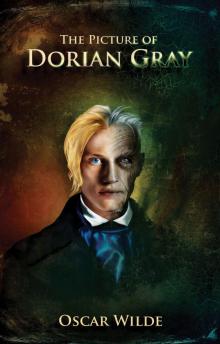 The Picture of Dorian Gray
The Picture of Dorian Gray The Importance of Being Earnest
The Importance of Being Earnest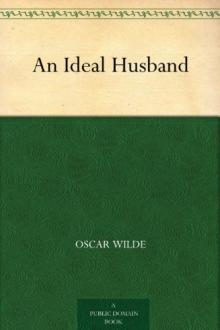 An Ideal Husband
An Ideal Husband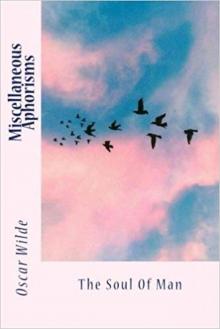 Miscellaneous Aphorisms; The Soul of Man
Miscellaneous Aphorisms; The Soul of Man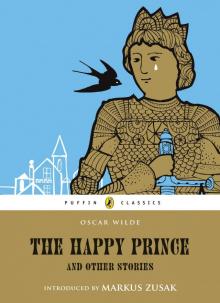 The Happy Prince and Other Tales
The Happy Prince and Other Tales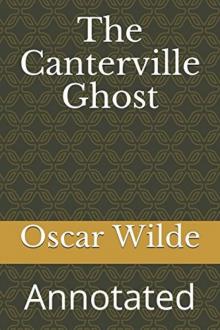 The Canterville Ghost: Annotated
The Canterville Ghost: Annotated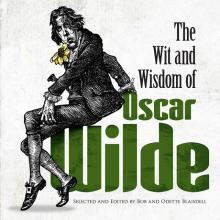 The Wit and Wisdom of Oscar Wilde
The Wit and Wisdom of Oscar Wilde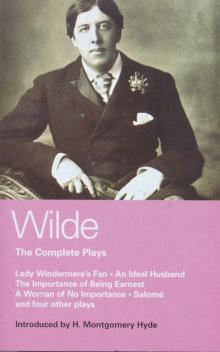 The Complete Plays
The Complete Plays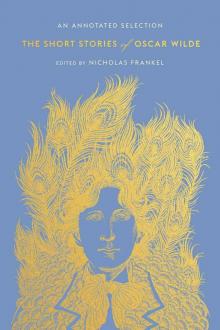 The Short Stories of Oscar Wilde
The Short Stories of Oscar Wilde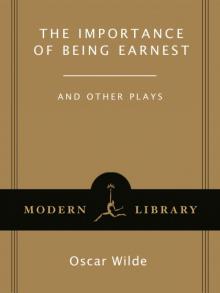 The Importance of Being Earnest: And Other Plays
The Importance of Being Earnest: And Other Plays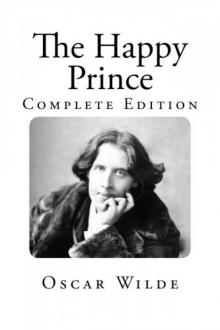 The Happy Prince (Oscar Wilde Classics)
The Happy Prince (Oscar Wilde Classics)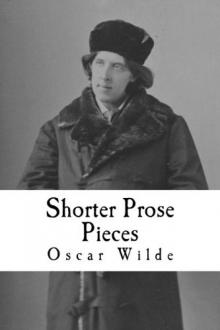 Shorter Prose Pieces
Shorter Prose Pieces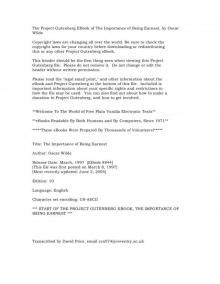 Importance of Being Earnest
Importance of Being Earnest Selected Tales: Shorter Prose Pieces
Selected Tales: Shorter Prose Pieces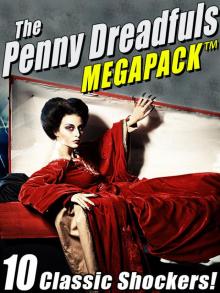 The Penny Dreadfuls MEGAPACK™
The Penny Dreadfuls MEGAPACK™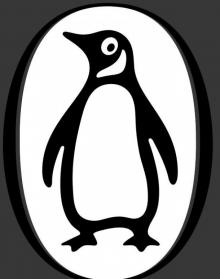 The Complete Short Fiction
The Complete Short Fiction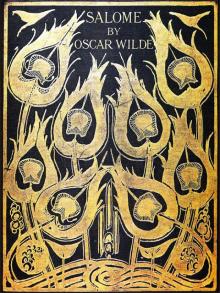 The Illustrated Salomé in English & French (with Active Table of Contents)
The Illustrated Salomé in English & French (with Active Table of Contents)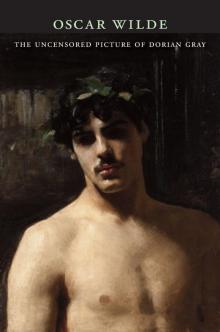 The Uncensored Picture of Dorian Gray
The Uncensored Picture of Dorian Gray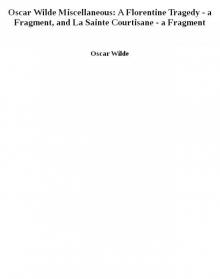 Oscar Wilde Miscellaneous: A Florentine Tragedy - a Fragment, and La Sainte Courtisane - a Fragment
Oscar Wilde Miscellaneous: A Florentine Tragedy - a Fragment, and La Sainte Courtisane - a Fragment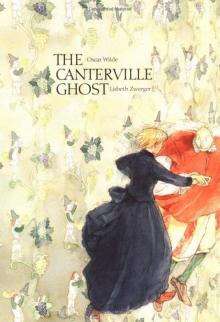 The Canterville Ghost (Illustrated by WALLACE GOLDSMITH)
The Canterville Ghost (Illustrated by WALLACE GOLDSMITH) Complete Works of Oscar Wilde
Complete Works of Oscar Wilde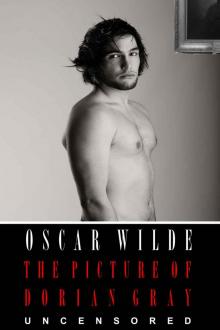 The Picture of Dorian Gray: The Uncensored Original Text (Annotated) (First Ebook Edition)
The Picture of Dorian Gray: The Uncensored Original Text (Annotated) (First Ebook Edition) Fifty Shades of Dorian Gray
Fifty Shades of Dorian Gray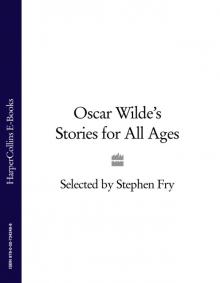 Oscar Wilde's Stories for All Ages
Oscar Wilde's Stories for All Ages The Happy Prince & Other Stories (Puffin Classics Relaunch)
The Happy Prince & Other Stories (Puffin Classics Relaunch)